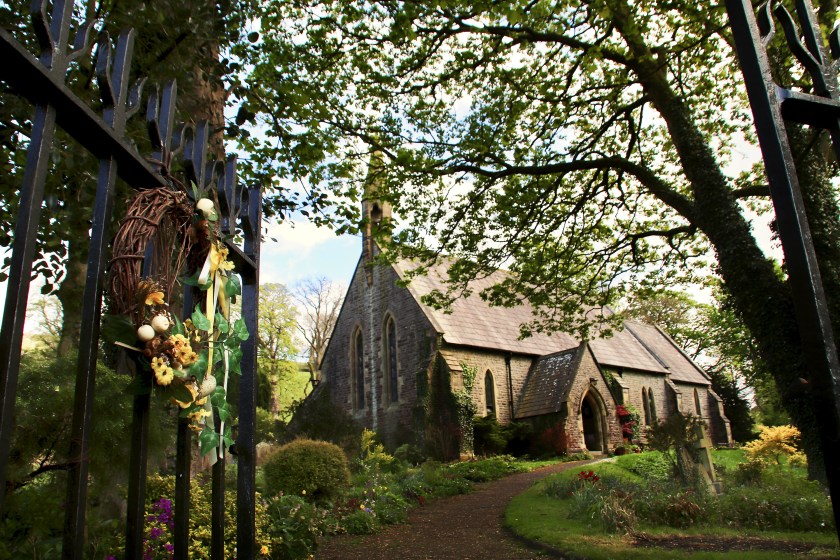
Since my last blog, my hair has grown a lot and I’ve baked two lots of bread and a batch of scones. Even the birds turned their beaks up at my first loaf. The second one was a little more edible, but considering the length of time it took me to prepare and bake, and the carnage left to clean and tidy up afterward, I won’t be attempting a third loaf. The scones were edible if a little deflated. I love scones but even I got fed up with them after the tenth one. No wonder I’m piling on weight. I tried to convince myself this was because of the amount of hair on my head, which is now as long as it was during my Hippy days of the 1970s.
Oh, and during the good weather I did manage some splendid walks from home, so I do have a few new photos to show. The top photo was taken on my way up Giggleswick Scar on the opposite side of the dale.


Before the lockdown we used to curse about the time we had to wait at the checkouts at our local supermarket, now we bleat at having to queue outside waiting to get in. A former neighbour spotted me in the queue the other day and decided we should carry out a conversation despite us being four metres apart. The person between us appeared distinctly awkward but definitely unwilling to give up her position to allow the conversation to continue in a slightly less public manner.

Most conversations now seem to take place digitally. However, I’ve had a break from social media recently, just taking occasional peeks at my accounts but not back-tracking. So if anyone has been expecting a response from me, I apologise – you’ll have to message me directly, email or phone Why not write me a letter? A postcard would be nice.

In the shade of the hawthorn tree pictured above, which looks splendid in its spring clothes, is a simple plank bench. There’s probably been a seat here for many years, sited on an old track up the hill from Langcliffe to Winskill. It’s a handy resting place before tackling the path’s steep section, and gives you a chance to sit and admire a fabulous view up Ribblesdale (pic below shows part of what’s on offer).

If you’re still stuck at home you might have time to read this tale from the Dales, one of many I’ve picked up during my years traveling the region and working as editor of Dalesman.

There are no modern roads between Horsehouse in Coverdale and Middlesmoor in Nidderdale – a distance of just over five miles as the crow flies. The shortest route by car is nearer 27 miles. Between the two dales is a mighty ridge which for much of its length rises between 1,600-2,000ft high and is bleak uncultivated moorland. It generally marks the border of the south-eastern end of the Yorkshire Dales National Park.
Today, on the Nidderdale side of the ridge lie Angram and Scar House reservoirs holding vast amounts of water to be used by the citizens of Bradford. For hundreds of years before this top end of the valley was dammed in the 1920s, animal dealers crossed this barren barrier on their way from the north, as far as Scotland, to trade in the West Riding.
There is still an ancient track between Horsehouse and Middlesmoor, settlements that were handy stopping-off points for the jaggers, as the packmen were called. Midway between the two places, just on the Nidderdale side, is Lodge. Now a farm, it was in the early 1700s a remote inn run by a mother and her daughter.
The inn would have been a welcome sight for the men after tackling the long steep hill from Coverdale, battling against the worst Dales weather and the rough terrain. Unfortunately for some of those weary travelers, their journeys – and their lives – would end in this miserable place in mysterious and macabre circumstances.
There are a few versions of the story of what happened to the poor souls, some perhaps being over-embellished during the last 300 years. Several of the packmen became well known after traveling the same route for many years. So locals started asking questions when some of them failed to turn up. It became more apparent that something was amiss when the wives of three Scottish packmen headed south to find out why their husbands had not returned home.
They discovered that the men had been seen at Horsehouse but not in Middlesmoor. It had also been noted that the Lodge innkeepers suddenly seemed more prosperous, and that farmers in the area were using Scottish ponies, and that their wives were wearing Paisley shawls, having been sold to them by the ladies of the inn.
Following a search of the area (now known as Dead Man’s Hill) near the inn, three headless bodies were found buried in shallow graves. The story goes that the two women got the men drunk and cut off their heads. Some say the bodies were discovered by travelers only when they spotted the packmen’s abandoned sheepdog digging at the burial site.
What happened to the culprits is not clear. One version says they were taken to Pateley Bridge where they were tried and hung. Another claims that the pair were found to be witches who turned to stone on the hills. Known as Jenny Twigg and daughter Tib (below), the pair of stone sentinels stand isolated, overlooking the bleak moorland of upper Nidderdale.

The lambs and sheep have kept me amused on my local walks…

Sadly no trains yet so here’s one from last year at Settle station.
















